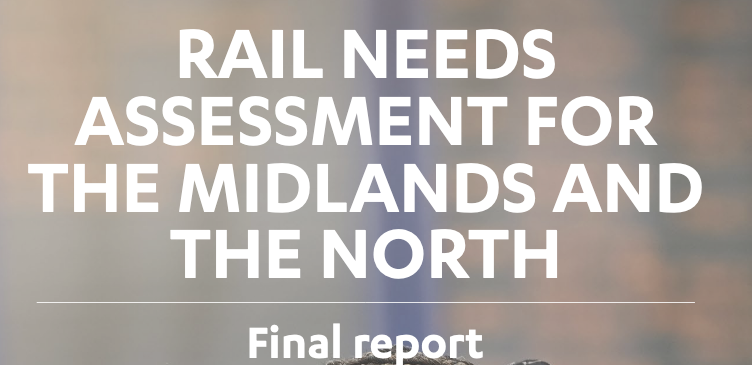The National Infrastructure Commission (NIC) has published its final report on Rail Needs Assessment for the Midlands and the North. This had been commissioned by the government to support its intention to prepare an Integrated Rail Plan to identify the most effective scoping, phasing and sequencing of relevant investments and how to integrate HS2, Northern Powerhouse Rail, Midlands Rail Hub and other proposed rail investments.
The projection of benefits departs from the standard transport cost-benefit analysis in which the main economic benefit to users is the saving of travel time. As set out in the annex to the report, the Commission’s approach is to assess the potential for rail investments to support both economic growth and improved quality of life, as these arise through the increase in density in city centres. Such density increase generates the well-known boost to productivity from agglomeration, an approach which is innovatively extended to capture the consumption impacts of agglomeration through access to increased amenities. The latter replaces conventional time saving benefits.
The NIC analysis recognises increased wages for workers accessing better paid jobs through increased rail capacity. Improvements in rail connectivity between cities and towns are also estimated, which contribute to increased productivity.While changes in life cycle carbon emissions and in natural capital are estimated, changes in land use are not.
The NIC’s methodology is used to compare packages of investment, formulated according to both overall cost and emphasis on enhancing links, regional and long distance. Broadly, investment in regional links comes out as a bit more attractive than in long distance links, which implies less importance to building the eastern leg of HS2 to improve journey times to London than in reinforcing connections within the regions. However, in relation to the cost of investment, none of this additional rail capacity seems very attractive, although the Commission concludes that with some assumptions about the non-monetised benefits, its analysis suggests the full benefits should meet or outweigh the costs of the packages. In this respect it is similar to the conventional economic analysis of HS2.
Assessment
The NIC analysis is particularly interesting in that it is based on the recognition that travel time savings are not a satisfactory basis for estimating the benefits of transport investment, given that average travel time has not changed for at least half a century despite huge investment justified by the expectation of time savings. So the NIC focuses on the benefits of increased density of city centres that could be made possible by better rail connections. The established estimation of productivity benefits arising from higher density, the agglomeration effect, is extended to amenity benefits to consumers, a welcome innovation. Nevertheless, valuation of agglomeration effects is indirect, depending on econometric analysis, as opposed to changes in land use and value that are directly observable. So the omission of changes in land use from the NIC analysis is a pity.

